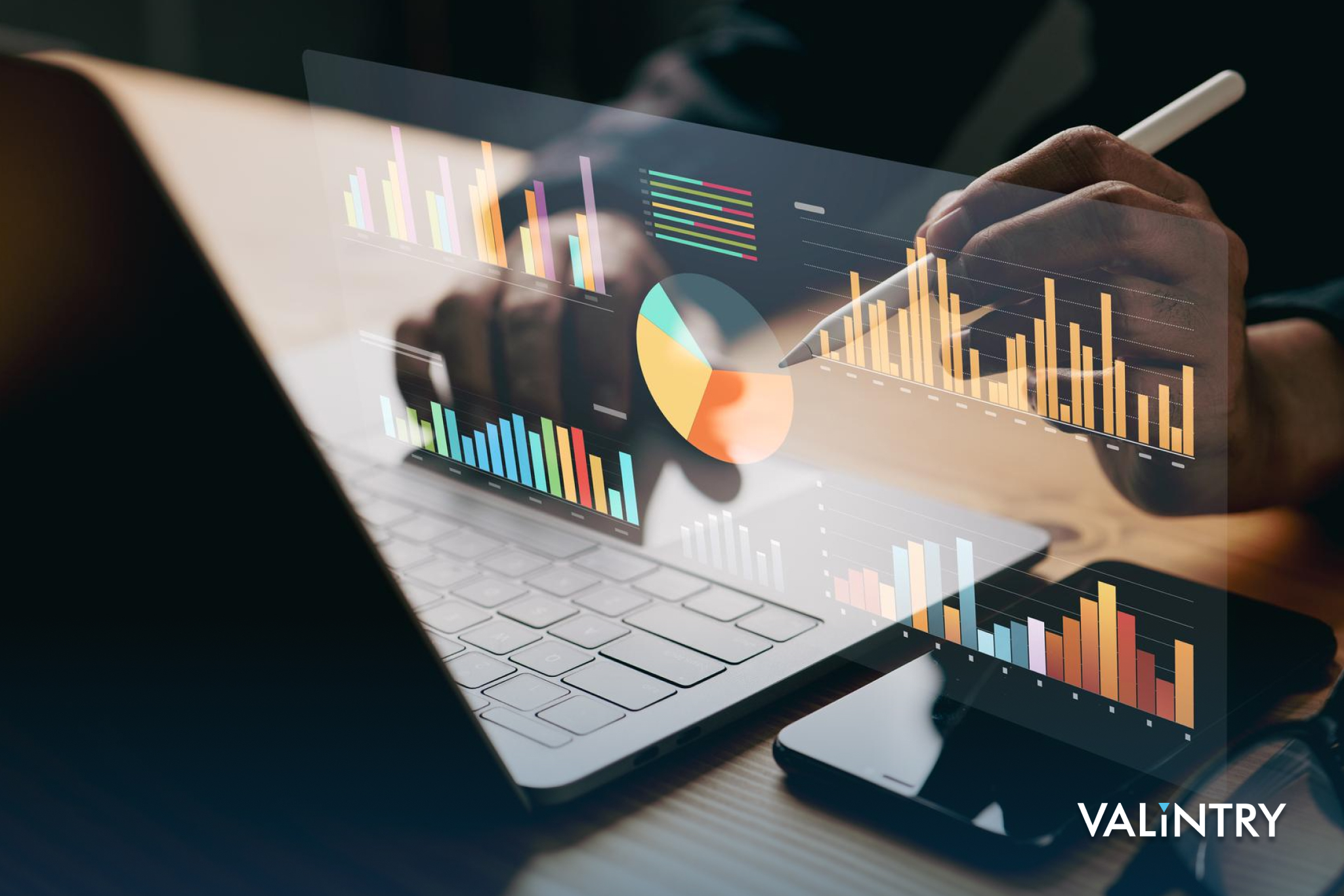
As organizations continue to place greater emphasis on using their mountains of customer and market data to drive decision making, Mid-Level and Senior Data Analysts who possess both technical skills and business acumen are in high demand. So, the Data Analyst recruiters at VALiNTRY put this list of interview questions together to help you reach the next step of your Data Science career.
From testing proficiency in areas like SQL, statistics, data visualization, and problem-solving to the understanding how applicants communicate insights and drive business value, below are the most common data analyst interview questions for 2024 and guidance on how to answer them effectively.
Key Sections
Mid-Career and Senior Data Analyst Interview Questions
Q1) What are the ethical considerations of data analysis?
Ethical considerations in data analysis include:
- Privacy: Ensuring data confidentiality and respecting user privacy
- Bias: Avoiding biases in data collection and analysis
- Transparency: Being clear about methodologies and limitations
- Consent: Obtaining proper consent for data use
- Accuracy: Ensuring data accuracy and integrity
- Security: Protecting data from unauthorized access and breaches
Q2) Describe your experience with data visualization tools
I have extensive experience with various data visualization tools. I frequently use:
- Tableau: For creating interactive and shareable dashboards
- Power BI: For business analytics and data visualizations
- Excel: For quick visualizations and pivot tables
- Python Libraries (Matplotlib, Seaborn): For custom visualizations and detailed analysis
- Google Data Studio: For integrating and visualizing data from Google services
These tools help me present data insights effectively to stakeholders.
Categories
- Accounting & Finance
- Accounting Staffing Agency
- AI Recruiting
- AI Technology
- Android Developer
- Bookkeping services
- Cash Application Staff
- Data Analyst Staffing Agency
- Finance Recruitment Agency
- Find a job
- Full Stack Developer
- Hire Talent
- Hire Data Analyst
- IT Staff Augmentation
- IT Staffing
- Permanent Recruitment Vs. Temporary Staffing
- Sage Business Cloud Accounting
- Salesforce Recruitment Agency
- Salesforce Staffing
- Tech Recruiter
- Workday Accounting Staff
- Accounts Receivable
Q3) How do you interpret data to make business decisions?
To interpret data for business decisions, I follow these steps:
- Data Analysis: Use statistical methods and visualization tools to identify trends, patterns, and anomalies
- Contextual Understanding: Relate findings to business context and objectives.
- Insights Extraction: Derive actionable insights from the data
- Stakeholder Communication: Present insights through clear visualizations and reports
- Decision-Making: Recommend data-driven actions based on insights to drive business strategies
Q4) Explain the CRISP-DM methodology
The CRISP-DM (Cross-Industry Standard Process for Data Mining) methodology is a structured approach to data mining and includes the following steps:
- Business Understanding: Define objectives and requirements
- Data Understanding: Collect initial data and identify data quality issues
- Data Preparation: Clean and format data for analysis
- Modeling: Apply statistical or machine learning models
- Evaluation: Assess the model’s accuracy and effectiveness
- Deployment: Implement the model to make business decisions
Q5) How do you ensure data quality and integrity?
To ensure data quality and integrity, I follow these practices:
- Data Cleaning: Remove duplicates, correct errors, and handle missing values
- Validation: Use validation rules to ensure data accuracy and consistency
- Regular Audits: Conduct regular data quality audits to identify and rectify issues
- Standardization: Implement data standards and protocols
- Access Controls: Restrict data access to authorized users to prevent unauthorized changes
- Monitoring: Continuously monitor data processes to detect and address quality issues promptly
Q6) Describe your experience with big data technologies
I have extensive experience working with big data technologies. I frequently use:
- Hadoop: For distributed storage and processing of large data sets
- Spark: For fast data processing and real-time analytics
- Hive: For data warehousing on top of Hadoop
- Kafka: For real-time data streaming
- NoSQL Databases (e.g., Cassandra, MongoDB): For handling large volumes of unstructured data
- Monitoring: Continuously monitor data processes to detect and address quality issues promptly
These tools help in efficiently managing, processing, and analyzing big data to derive valuable business insights
Q7) What are the different types of regression analysis?
There are several types of regression analysis, including:
- Linear Regression: Models the relationship between two variables by fitting a linear equation
- Multiple Regression: Extends linear regression to include multiple independent variables
- Logistic Regression: Used for binary classification problems
- Polynomial Regression: Models the relationship between variables as an nth-degree polynomial
- Ridge Regression: Addresses multicollinearity by adding a penalty term
- Lasso Regression: Similar to ridge regression but can shrink coefficients to zero
- Elastic Net Regression: Combines ridge and lasso regression penalties
Q8) How do you handle large datasets?
Handling large datasets involves several strategies:
- Data Partitioning: Split the data into manageable chunks
- Efficient Storage: Use distributed storage solutions like Hadoop HDFS
- In-Memory Processing: Utilize tools like Apache Spark for faster data processing
- Optimization: Optimize queries and algorithms to reduce computational load
- Sampling: Analyze a representative subset of data to conclude
- Scalability: Implement scalable data processing frameworks to handle growth
Q9) Explain the concept of machine learning and its applications to Data Science

Machine Learning (ML) is a subset of artificial intelligence that enables systems to learn from data and improve their performance over time without being explicitly programmed. ML algorithms identify patterns and make predictions or decisions based on data. Applications for ML include:
- Healthcare: Disease prediction and personalized treatment plans
- Finance: Fraud detection and algorithmic trading
- Marketing: Customer segmentation and recommendation systems
- Transportation: Autonomous vehicles and route optimization
- Retail: Inventory management and demand forecasting
Q10) What is the difference between predictive and prescriptive analytics?
Here is a table summarizing the difference between predictive and prescriptive analytics:
| |
Predictive Analytics | Prescriptive Analytics |
|---|---|---|
| Purpose | Forecasts future outcomes based on historical data | Suggests actions to achieve desired outcomes |
| Key Question | "What could happen?" | "What should we do?" |
| Techniques Used | Statistical models, machine learning | Optimization algorithms, simulation models |
| Examples | Demand forecasting, risk assessment | Supply chain optimization, personalized marketing strategies |
| Outcome | Provides insights into potential future events | Recommends specific actions to influence future events |
Q11) How do you design and conduct A/B testing?
To design and conduct A/B testing, follow these steps:
- Define Objective: Clearly define what you want to test (e.g., website layout, email subject line)
- Create Variations: Develop two versions (A and B) of the element you are testing
- Random Assignment: Randomly assign users to either version A or B
- Measure Performance: Track and analyze key metrics (e.g., conversion rate, click-through rate)
- Analyze Results: Use statistical methods to determine if there is a significant difference between the two versions
- Implement Findings: Apply the insights gained to optimize performance
Q12) Describe your experience with cloud-based data solutions
I have extensive experience working with various cloud-based data solutions. My expertise includes:
- Amazon Web Services (AWS): Utilizing services like S3 for storage, Redshift for data warehousing, and EMR for big data processing
- Microsoft Azure: Implementing Azure Data Lake and Azure SQL Database for data management and analytics
These tools have enabled me to efficiently handle large datasets, perform scalable data processing, and derive actionable insights.
Q13) Explain the use of statistical significance in data analysis
Statistical significance is used to determine if the observed results in data analysis are not due to chance. It helps in validating hypotheses by comparing the p-value to a significance level (alpha). If the p-value is less than alpha, the results are considered statistically significant, meaning there is strong evidence against the null hypothesis. This ensures that findings are reliable and can be used to make informed decisions.
Q14) How do you approach data storytelling?
To approach data storytelling, I follow these steps:
- Understand the Audience: Tailor the story to the audience’s knowledge level and interests
- Define the Objective: Clearly outline the purpose and key message
- Collect and Analyze Data: Gather relevant data and perform a thorough analysis
- Create a Narrative: Build a compelling story around the data insights
- Visualize Data: Use charts and graphs to make the data more engaging
- Refine and Present: Ensure clarity and coherence, then present the story effectively
Q15) What is your process for data-driven decision-making?
My process for data-driven decision-making involves:
- Identify the Objective: Clearly define the business problem or goal
- Collect Data: Gather relevant and reliable data
- Analyze Data: Use statistical and analytical methods to extract insights
- Interpret Results: Understand the implications of the data analysis
- Make Decisions: Formulate strategies and actions based on the insights
- Monitor and Review: Continuously monitor the outcomes and adjust as necessary
Q16) How do you integrate data from multiple sources?
To integrate data from multiple sources, I follow these steps:
- Identify Data Sources: Determine the relevant data sources to be integrated
- Data Cleaning: Ensure data quality by removing inconsistencies and duplicates
- Data Transformation: Standardize data formats and structures
- Use ETL Tools: Employ Extract, Transform, and Load (ETL) tools to automate the integration process
- Merge Data: Combine data into a unified dataset
- Validation: Validate the integrated data to ensure accuracy and consistency
Q17) How do you optimize SQL queries for performance?
To optimize SQL queries for performance, I follow these practices:
- Indexing: Create indexes on frequently queried columns to speed up data retrieval
- Avoiding Select: Select only necessary columns to reduce data transfer
- Query Optimization: Use query execution plans to identify and fix performance bottlenecks
- Joins: Use appropriate join types and minimize nested loops
- Partitioning: Partition large tables to improve query efficiency
- Caching: Utilize caching mechanisms for frequently accessed data
Q18) Describe a challenging data analysis project you worked on
In a recent project, I analyzed customer behavior data for a retail company to identify purchasing patterns and improve marketing strategies. The challenge was handling a large dataset with millions of records and dealing with missing and inconsistent data. I used Python for data cleaning and transformation and applied machine learning algorithms to segment customers. Visualization tools like Tableau helped in presenting the findings. The insights led to a targeted marketing campaign that significantly increased sales.
Q19) How do you handle data privacy and security concerns?
To handle data privacy and security concerns, I implement the following measures:
- Data Encryption: Encrypt sensitive data both in transit and at rest
- Access Control: Use strict access controls and multi-factor authentication
- Regular Audits: Conduct regular security audits and vulnerability assessments
- Compliance: Ensure compliance with relevant data protection regulations (e.g., GDPR or HIPAA)
- Employee Training: Train employees on data security best practices and protocols
Q20) Explain the concept of data governance
Data governance involves the management of data availability, usability, integrity, and security within an organization. It encompasses the actions, processes, and technologies required to manage data throughout its lifecycle. The goal is to ensure that data is accurate, consistent, and accessible while being secure and compliant with regulations. Effective data governance includes setting internal data policies, defining roles and responsibilities, and implementing data quality controls.
Q21) How do you stay updated with the latest trends in data analytics?

To stay updated with the latest trends in data analytics, I follow these strategies:
- Read Industry Blogs and Journals: Regularly read blogs, articles, and journals from reputable sources like Medium, Data Science Central, and KDnuggets
- Online Courses and Webinars: Enroll in courses and attend webinars from platforms like Coursera and edX
- Networking: Participate in industry conferences, workshops, and online communities
- Social Media: Follow influencers and organizations on LinkedIn and Twitter
- Continuous Learning: Pursue certifications and keep learning new tools and techniques
Q22) What are your strategies for effective data communication with stakeholders?
To communicate data effectively with stakeholders, I use the following strategies:
- Know Your Audience: Tailor the message to the audience’s knowledge level and interests
- Simplify Complex Data: Break down complex data into simple, understandable insights
- Use Visualizations: Employ charts, graphs, and dashboards to make data more engaging
- Tell a Story: Create a compelling narrative around the data findings
- Be Transparent: Clearly explain methodologies, limitations, and assumptions
- Solicit Feedback: Engage stakeholders and encourage questions to ensure clarity
Once the interview stage is complete and an offer is made, wise Data Analysts gather independent information about salaries to ensure that they are being compensated fairly. In fact, a very common question from candidates reaching out to the Data Science recruiters at VALiNTRY is, “How much does the job pay?”
Q22) What are your strategies for effective data communication with stakeholders?
To communicate data effectively with stakeholders, I use the following strategies:
- Know Your Audience: Tailor the message to the audience’s knowledge level and interests
- Simplify Complex Data: Break down complex data into simple, understandable insights
- Use Visualizations: Employ charts, graphs, and dashboards to make data more engaging
- Tell a Story: Create a compelling narrative around the data findings
- Be Transparent: Clearly explain methodologies, limitations, and assumptions
- Solicit Feedback: Engage stakeholders and encourage questions to ensure clarity
Once the interview stage is complete and an offer is made, wise Data Analysts gather independent information about salaries to ensure that they are being compensated fairly. In fact, a very common question from candidates reaching out to the Data Science recruiters at VALiNTRY is, “How much does the job pay?”
How Much Does a Data Analyst Make in the U.S.?
To address this question, our team gathered data from various sources like Glassdoor and Salary.com to develop a comprehensive table showing the average salary ranges for a variety of Data Science roles and levels in the U.S.
| Experience/Job Role |
Average Salary(USD) |
|---|---|
| Entry-Level Data Analyst | $70,101 |
| Mid-Career Data Analyst | $82,288 |
| Senior Data Analyst | $109,880 |
| Principal Data Analyst | $156,322 |
| Analytics Manager | $126,282 |
| Director of Analytics | $168,398 |
In addition to the base salaries listed above, additional compensation / bonuses can range from $1,000 to $15,000 annually.
NOTE: These ranges are national averages and will vary based on location, specific industry expertise, additional skills, and the number of certifications. For instance, Data Analysts in high-demand areas like the San Francisco Bay Area or with specialized skills may earn towards the higher end, or even beyond, these ranges.
Data Science Job Trends in 2024
The Data Science job market continues to experience robust growth and evolving demands as organizations of all stripes increasingly rely on data-driven decision-making. Here’s an expanded look at the key trends shaping the field:
Global Demand Surges
The global appetite for data professionals shows no signs of slowing down. Projections indicate that approximately 11.5 million data-related jobs will be created worldwide by the end of 2026. This surge reflects the growing recognition of data’s critical role in driving business strategy and innovation across industries.
Impressive Growth Projections
The U.S. Bureau of Labor Statistics forecasts a 25% growth in demand for Data Analysts between 2020 and 2030, far outpacing the average for all occupations. This significant increase underscores the expanding need for professionals who can extract meaningful insights from complex datasets. As businesses continue to amass vast amounts of data, the ability to analyze and interpret this information becomes increasingly valuable.
Evolving Skill Requirements
As the field matures, employers are seeking candidates with a diverse skill set. Beyond proficiency in statistical analysis and programming languages like Python and R, there’s an increasing emphasis on:
- Machine learning and artificial intelligence expertise
- Data visualization and storytelling abilities
- Cloud computing knowledge, particularly with platforms like AWS and Azure
- Strong business acumen and communication skills
Industry Diversification
While the Tech and Finance sectors continue to be major employers of Data Scientists, other industries are rapidly catching up. The Healthcare, Retail, Manufacturing, and government sectors are increasingly leveraging Data Science to optimize operations and improve decision-making processes.
As organizations continue to recognize the value of data-driven insights, the demand for Mid-Career and Senior Data Scientists is expected to remain strong for the foreseeable future. Data Scientists who stay current with emerging technologies and develop a well-rounded skill set will be well-positioned to capitalize on these opportunities.
Let VALiNTRY Help You Accelerate Your Data Analyst
Career
Although there is significant demand for qualified Data Science professionals, finding a position that matches you as a candidate to an organization’s need and culture can be challenging. This is where the Data Analyst recruiters at VALiNTRY can help. We have relationships with top employers and match Mid-Career and Senior Data Analyst candidates with the perfect opportunities.
Ready for the next step in your Data Science career? Reach out to our Data Analyst recruiting team.
